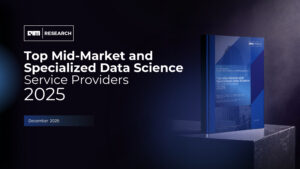Machine readable regulation (MRR) is the process of converting regulatory text into a structured format that can be easily understood and processed by machines. In layman terms – When an over speeding vehicle is flouting the traffic rules, government administered CCTV automatically captures an image and sends a speeding ticket to the concerned person. This is done through MRR. The regulations are understood by the camera and then accordingly acted upon. MRR therefore plays a vital role in implementation & compliance of regulatory actions. It provides significant advantages to both regulators and regulated entities.
In the past, businesses, especially in the banking sector, have faced considerable challenges in complying with numerous regulations. Any change in existing regulation or bringing a new regulation puts an enormous regulatory burden on the companies. The conventional approach involved laborious manual paperwork and time-consuming form filling, resulting in inefficiencies and added complexity. For example, India’s Central Bank, the Reserve Bank of India (RBI), mandates the entity bank to file approximately 700 forms for regulatory compliance. However, the advent of MRR will revolutionize this landscape by automating and simplifying compliance procedures.
MRR – the way forward
Faster implementation and ready adaptation of MRR will result in multiple opportunities for regulators and entity companies to capitalize. Initially there will be an additional cost in issuing MRR in public domain for the regulator. But the cost will come down with respect to overall cost needed for compliance adherence. Regulators can ensure that entities are not committing any misinterpretation errors whereas entities such as banks, insurers, auditors, can refrain themselves from making any error of judgment. MRR will also improve the quality of compliance. With MRR, faster and cost-effective regulation updates can be executed at various departments across multiple verticals, without committing mistakes.
MRR consists of temporal and geo-spatial features. Temporal features enable the regulation to be implemented at a certain timeframe. It can be controlled based on different timelines of execution. For example, if a regulator wants to implement one part of the changed regulation in January and another in April or at different days, it will be doable. The geo-spatial feature enables the regulation to be navigated in different ways at different locations and geographies. Such complexities are made simpler while controlling the cost of execution.
At present the adaptation of MRR is voluntary but once regulators make it mandatory, it will be swift and effective.
MRR adaptation and its effective performance can be achieved through high-quality standard data only. If the data from the database is massaged by the compliance officials before comments, then the APIs and MRRs will not perform as desired. Therefore, there is a prerequisite of having high-quality data and standards for MRR. In absence of the same, MRR will have inconsistencies. Web 3 based compliances of data standards is best suited. For example, rule-based regulations are easily amenable by MRR whereas principle-based regulations are not because it requires a higher level of understanding by machines. With trained AI models principle-based regulations can be executed by MRR. But apart from AI, exception handling provisions should be designed carefully so that any person of certain type should not be denied insurance claims because blind implementation of MRR can be avoided.
In the financial regulatory space, MRR will be a game changer. A few early adoption use cases of MRR are, FINRA (a US financial regulator) creating MRR based handbooks and search places where both humans and machines look for specific rules, embedding taxonomy to an API. European Union AI (EU-AI) act, a precursor to MRR (regulating AI and ensuring transparency).
Financial reporting is the biggest use case of MRR that can be capitalized. When companies have complied with the regulations then reporting in the right way becomes crucial. MRR thus can ensure 100% compliance adherence in financial reporting, ranging from financial statements, ESG compliance reporting, etc. An example of MRR reporting benefit – In Silicon Valley Bank (SVB), if they had an automatic reporting system then the alert would have been flagged when the losses of the bank exceeded the capital in the month of Oct-2022. This way the Fed could have acted timely and avoided the panic in the financial market.
MRR will bring consistencies and uniformities among different companies of the same domain and as well as different domains. This way the arbitrage risks can also be mitigated. For example, if a person wants to take a green loan but his company is not ESG compliant, so a bank will deny his loan, but an NBFC where the ESG compliance is not mandatory will approve. In the presence of MRR such arbitrage can be avoided.
As the world is becoming more connected digitally, higher regulation is the need of the hour. MRR thus can be the next big revolution in the financial industry. In the Web 3.0 era, with the evolution of the internet, higher adaptation of AI, and development in the decentralization technology (blockchain), MRR will generate the Alpha.
This article is written by a member of the AIM Leaders Council. AIM Leaders Council is an invitation-only forum of senior executives in the Data Science and Analytics industry. To check if you are eligible for a membership, please fill out the form here.
This article is written by Shailesh Dhuri, Chief Executive Officer at Decimal Point Analytics. He is a result-driven professional with nearly three decades of experience in Entrepreneurship, Fund Management and Artificial Intelligence for Data Analytics. His passion lies in innovation and technology-driven solutions and is a highly sought-after leader and Innovator in the space of real-life applications of artificial intelligence technology that are used in massive data, quantitive, statistical analysis, and algorithms.







